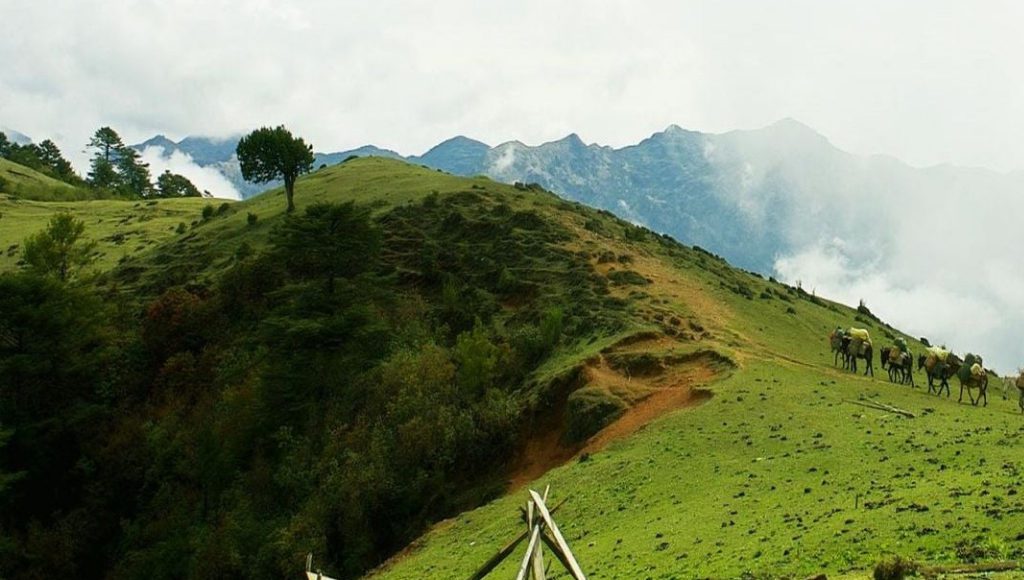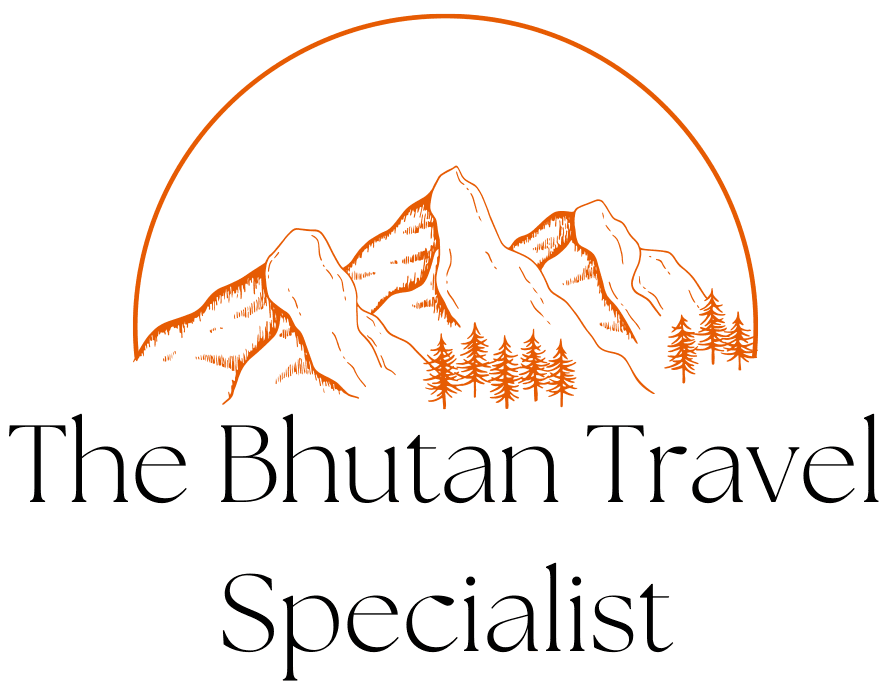Do not hesitate to give us a call. We are an expert team and we are happy to talk to you.
(+975) 17953762

Overview:
Embark on a captivating 7-day journey through the mystical landscapes of Bhutan with our carefully crafted itinerary. Begin your adventure in Paro, where the serene beauty of the Himalayas welcomes you. Transition to Thimphu, the capital, to explore cultural wonders like the National Memorial Chorten and Thimphu Tashichho Dzong. Journey to Punakha via Dochula Pass, discovering the historic Punakha Dzong and the longest suspension bridge in Bhutan. Immerse yourself in Punakha’s rich heritage, visiting Khamsum Yuley Temple and sharing a heartwarming dinner with a Bhutanese family. The tour culminates in Paro with a hike to the iconic Tiger’s Nest Monastery, a spiritual and architectural marvel perched on cliffs. As you bid farewell, carry with you the memories of Bhutan’s warm hospitality, cultural treasures, and breathtaking landscapes.
Tour Highlights:
1. Explore Thimphu’s cultural gems, including the National Memorial Chorten and Thimphu Tashichho Dzong.
2. Experience the tranquility of Dochula Pass and visit the Druk Wangyal Lhakhang temple.
3. Discover Punakha’s architectural marvel, Punakha Dzong, and cross the Pho Chhu Suspension Bridge.
4. Visit Khamsum Yuley Temple in Punakha, adorned with intricate artwork and paintings.
5. Enjoy a unique cultural experience by sharing dinner with a Bhutanese family.
6. Explore Paro’s ancient monasteries, including Kyichu Lhakhang and Dumtse Lhakhang.
7. Embark on a memorable hike to the iconic Tiger’s Nest Monastery in Paro.
8. Immerse yourself in Bhutanese traditions, witnessing monks, traditional attire, and local markets.
9. Capture the breathtaking landscapes of the Himalayas and Mount Jomolhari.
10. Depart with a heart filled with serenity and memories of Bhutan’s endless enchantments. Tashi Delek!
Paro International Airport (Google Map)
Upon your arrival at Paro International Airport, our delightful tour guide will warmly greet you just outside the arrival hall. Located 7,333 feet above sea level, the first thing you’ll notice is the invigorating effect of the high altitudes. We will give you time to acclimate as we embark on a short drive to Thimphu, the capital of Bhutan. Thimphu serves as the perfect transition from your familiar lifestyle to our extraordinary country, unlike any other place on earth. Here, you’ll have the opportunity to immerse yourself in our local customs, witnessing monks donning traditional red robes, men wearing striped ghos, and women adorned in brightly colored kiras. After settling into your hotel, we’ll begin unraveling the mysteries of Bhutan by visiting Thimphu’s most significant sites. Our first stop is the National Memorial Chorten, a serene stupa built in 1974 to honor Jigme Dorji Wangchuk, the revered third king of Bhutan (1928-1972). We’ll then proceed to the Thimphu Tashichho Dzong, an impressive fortress and Buddhist monastery, which houses the offices of the current king and serves as the seat of the civil government. During the weekends, we’ll explore the lively Centenary Farmers’ Market, where local farmers showcase their fresh produce and unique items like yak legs. Adjacent to the market, you can indulge in bargaining for local handicrafts at Kundeyling Baazam. Our day concludes with a scenic drive to Buddha Point in Kuenselphodrang Nature Park, offering breathtaking views of the valley and surrounding mountains from the colossal seated Buddha Dordenma statue. After enjoying a delicious dinner, you can explore the charming shops, bars, and cafes that Thimphu has to offer.
Today, we’ll embark on a tour of Thimphu, starting with a 15-minute drive to Sangaygang, also known as BBS Tower. From this hillock, you’ll witness a magnificent panoramic view of Thimphu City. On the way, you’ll also have the opportunity to spot the Takin, Bhutan’s national animal. For early risers, there’s an option to request an invigorating morning walk to this viewpoint. Our next destination is Dechen Phodrang, located at the end of Gaden Lam. It was the original site of Thimphu’s Trashi Chhoe Dzong and currently houses the state monastic school. We’ll then visit Simply Bhutan, a captivating living museum and photo studio that aims to preserve and promote Bhutanese traditions and cultural diversity. Afterward, we’ll explore Simtokha Dzong, the oldest dzong in Bhutan, built in 1627 by Shabdrung Ngawang Namgyal. Today, it houses the Institute for Language and Cultural Studies and features over 300 exquisite slate carvings behind the prayer wheels in its courtyard.
Today, we’ll embark on a journey from Thimphu to Punakha, the former capital of Bhutan until 1955. Along the way, we’ll make a stop at Dochula Pass, a popular tourist spot offering breathtaking 360-degree views of the Himalayas. Here, you’ll also find the 108 Druk Wangyal Chortens, erected to commemorate Bhutanese soldiers who lost their lives in a 2003 battle with Assamese insurgents from India. Our next highlight is the Druk Wangyal Lhakhang temple, completed in 2008 to celebrate 100 years of monarchy and honor the fourth king, His Majesty Jigme Singye Wangchuck, who led the raid against the Indian rebels. Upon reaching Punakha, we’ll visit Punakha Dzong, an architectural marvel situated at the confluence of the Pho Chu and Mo Chu rivers. It serves as both a religious and administrative center for the region. Before the day ends, we’ll walk across the impressive Pho Chhu Suspension Bridge, the longest suspension bridge in Bhutan, offering stunning views of Punakha Dzong and the Pho Chhu Valley.
Today in Punakha, we’ll visit the magnificent Khamsum Yuley Temple, renowned for its intricate artwork and paintings depicting Buddhist teachings and the tutelary deities of Bhutan. This temple, built by the Queen Mother of the 5th King, stands as a symbol of universal peace. We’ll also enjoy a delightful picnic by the riverside, surrounded by the tranquil beauty of the area. Later, we’ll have the unique opportunity to visit a Bhutanese family at their home, where we’ll share dinner and engage in heartfelt conversations. This authentic experience offers a glimpse into the lives of Bhutanese people, allowing you to embrace the warm hospitality of the family and immerse yourself in Bhutanese culture.
Today, we’ll travel to Paro, a beautiful valley adorned with ancient monasteries and temples. Paro is home to Bhutan’s only airport and boasts stunning natural wonders, including the majestic Mount Jomolhari. Our first stop is Kyichu Lhakhang, the oldest temple in Bhutan, built to subdue obstacles to the spread of Buddhism. Next, we’ll visit the seventh-century Kyichu temple, radiating tranquility and housing a museum dedicated to the late Dilgo Khyentse Rinpoche, featuring photographs and artifacts associated with Rinpoche. Finally, we’ll explore Dumtse Lhakhang, a unique three-story temple built in 1433, representing hell, earth, and heaven. Please note that a special permit is required to enter Dumtse Lhakhang.
Get ready for an unforgettable adventure as we hike to one of Bhutan’s most iconic sites, the Tiger’s Nest, also known as Taktsang Monastery. Perched dramatically on the cliffs, this sacred Buddhist site has captivated visitors from around the world. The spiritual journey to Tiger’s Nest fills your heart with serenity, while the dramatic architectural wonder amazes hikers. Ascending over two thousand feet from the valley floor, you’ll experience a profound connection with nature and spirituality. According to legend, Guru Rinpoche, the founder of Bhutanese Buddhism, meditated in one of the caves here after flying from Tibet on the back of a tigress (his consort Yeshey Tshogyal). Guru Rinpoche’s meditation and emergence in eight manifestations transformed the place into a revered holy site, earning it the name Tiger’s Nest.
Today, we bid a fond farewell to the enchanting Himalayan country of Bhutan. We hope you have forged lasting friendships, created cherished memories, and captured countless photographs of this extraordinary land. We eagerly await the opportunity to welcome you back to Bhutan, a realm of endless enchantments. Tashi Delek!
There are 19 languages spoken in Bhutan, but the national language is Dzongkha. English is used throughout Bhutan’s education system, so it is widely used and understood.
Bhutan is a year-round destination. There are four seasons: summer (June to August), autumn (September to November), winter (December to February) and spring (March to May). But because of the range of altitudes in the country, and the influence of the north Indian monsoons, the climate is incredibly varied.
In the south, the humid, subtropical climate is fairly consistent year-round, with temperatures between 15oC and 30oC. Central Bhutan, with its temperate forests, has a more seasonal climate, with warm summers and cool, dry winters. The northern regions are much colder during winter. Because of the high altitude, mountain peaks are snowy year-round and the lower reaches remain cool in summer.
In summer, the Indian monsoon season runs from late June or July to late September, mostly affecting the southern regions. Most farming activities take place in the summer, when crops thrive in verdant landscapes.
Autumn, from late September or early October to late November, follows the rainy season. It is characterised by bright, sunny days and some early snowfall at higher elevations. It’s the season of feasts and festivals as farmers reap the fruits of their work.
From late November until March, the crisp, clear and sunny winter sets in, with frost throughout much of the country and snowfall common above elevations of 3,000 metres. The winter northeast monsoon brings gale-force winds at the highest altitudes through high mountain passes, giving Bhutan the name Drukyul, which means Land of the Thunder Dragon in Dzongkha (Bhutan’s national language).
Bhutan’s generally dry spring starts in early March and lasts until mid-April. It is a botanist’s delight, with nature in full bloom. Summer weather commences in mid-April with occasional showers and continues to late June.
Bhutan’s currency is called ngultrum. It’s 1:1 with Indian rupees.
Three different electrical plugs are used throughout Bhutan: the British plug (three square pins, compatible with type G sockets), the European plug (two round pins, compatible with type C socket) and the Indian plug (three thick round pins, compatible with type D sockets). It’s a good idea to bring adaptors for all three.
For telephone calls, Bhutan’s country code is +975. Make sure you add this to the beginning of any number if calling Bhutan from abroad.
You can apply online for a visa by completing this application form, or if you’re travelling with a tour operator, they may apply on your behalf. Read more about the visa here.
Visitors from Bangladesh and the Maldives requiring a visa can apply either online before travelling or in person upon arrival in Bhutan.
There is a one-off fee of US$40 for the processing of your application. This is payable at the same time as your Sustainable Development Fee (SDF), as part of the process of submitting your visa application.
The SDF is USD 100 per night for adults from all countries except for India. Children aged between 6 years and who have not yet turned 12 are eligible to pay USD 50 per night. Children who have not yet turned 6 years old do not have to pay any SDF.
The SDF for Indian nationals (showing a valid Indian passport or Voter ID card) is Nu. 1,200 (or the equivalent amount in Indian rupees) per person, per night. Children aged between 6 years and who have not yet turned 12 are eligible to pay Nu./INR 600 per night. Children who have not yet turned 6 years old do not have to pay any SDF.
Tourists visiting Samtse, Phuentsholing, Gelephu, and Samdrupjongkhar towns for 24 hours need not pay Sustainable Development Fee (SDF) beginning April 14, 2023. The waiver will be enforced for a year. The SDF waiver will only apply for tourists who do not travel beyond the designated zones of border towns. However, SDF will apply for visitors who travel beyond the designated zone of border towns.
Tourists will be charged SDF if they go beyond Gurung Basti in Samtse, and beyond Rinchending Checkpost in Phuentsholing. The designated zone in Gelephu is at Aipoli Bridge and Pinchinna checkpost in Samdrupjongkhar.
